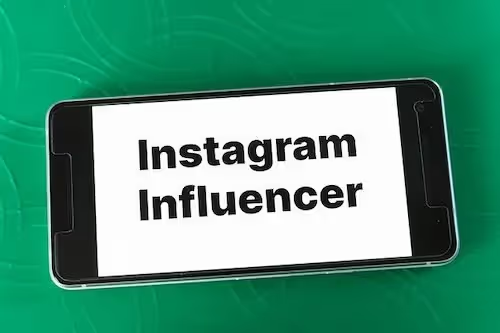Introduction
Influencer marketing is no longer a trend—it’s the front line of digital branding. But as creators hold more power in shaping brand narratives, companies face a growing challenge: maintaining control over brand reputation in a decentralized, fast-moving internet culture. This is where brand safety becomes mission-critical.
In this blog, we break down the current state of brand safety in influencer marketing—why it matters more than ever in 2025, what the biggest risks are, how real-world failures unfolded, and what tech-forward solutions can protect your brand moving forward.
What is Brand Safety in Influencer Marketing?
In influencer marketing, brand safety means making sure that creators you partner with won’t damage your reputation—before, during, or after a campaign. It’s about trust, alignment, and long-term brand integrity.
At its core, brand safety includes pre-vetting influencers, monitoring content in real time, and aligning values across every touchpoint.
Key components of brand safety:
- Influencer vetting to examine historical behavior and red flags.
- Social screening to scan posts, images, videos, and even comments for risk signals.
- Narrative fit and value alignment to ensure authenticity in collaboration.
- Contractual clarity to prepare for crisis scenarios.
- Continuous monitoring using tools and APIs.
Why Brand Safety Matters in 2025
In 2025, brand safety isn’t a checkbox—it’s a strategic pillar. With creator economies accelerating and cultures moving faster than ever, the consequences of oversight can be severe and irreversible.
From viral feuds to political insensitivity, one misstep can tank a campaign and cause lasting damage to brand trust.
What’s driving brand safety urgency:
- Billions in financial losses tied to scandals and boycotts (e.g., #NoStarbucks or AB InBev’s $11B drop).
- Perpetual visibility of old content, especially with AI-enhanced content search tools.
- Legal accountability is growing with global influencer advertising laws, like Italy’s Ferragni Law.
- Social media virality, where backlash can snowball in minutes.
The brands that win in 2025 are those who prepare for the worst—before it happens.
The Most Common Brand Safety Risks
The risks of influencer marketing are diverse, but they all share a common thread: poor vetting, weak oversight, or a misread of cultural context.
Each of the risks below has cost real brands their money, reputation, or even legal standing.
1. Misaligned Values
Creators with inconsistent or problematic values can tarnish a brand’s image, especially in categories like wellness, sustainability, or social justice.
2. Historical Content Scandals
Old tweets, YouTube videos, or TikToks can resurface and spark outrage. Examples like Zoella, James Charles, or Samantha Hudson illustrate how neglected digital history becomes a brand liability.
3. Narrative Contradictions
When a creator’s real-life decisions contradict their public persona, it can backfire. Think of Remi Bader’s sudden shift from body positivity to post-surgery silence.
4. Fake Follower Counts & Vanity Metrics
Without influencer vetting tools, brands waste budgets on inflated reach and hollow engagement. Bots don’t buy products.
5. Cultural Blind Spots
Kendall Jenner’s Pepsi ad trivializing Black Lives Matter is a textbook case of ideological mismatch and tone-deaf messaging.
Real-World Case Studies of Brand Safety Failures
Nothing highlights the cost of poor brand safety like real-life examples. These campaigns became cautionary tales—not because of bad products, but because of bad partnerships.
Olivia Jade x Sephora
A college admissions scandal blew up when her influencer persona conflicted with the reality of her privileged admission. Sephora and TRESemmé faced public backlash and had to cut ties within days.
James Charles x Morphe
Repeated online volatility and allegations of misconduct were ignored until it was too late. Morphe’s delay in response contributed to declining credibility and eventual bankruptcy.
Chiara Ferragni x Balocco
A misleading charity campaign led to fines over €1 million and the introduction of Italy’s Ferragni Law, setting legal standards for influencer advertising.
Sondos Alqattan x MAC Cosmetics
Insensitive remarks about domestic workers surfaced, forcing global brands like MAC to sever ties immediately.
Each of these stories shows that scandal follows oversight—and that oversight is preventable with the right tools.
The Rise of Risk-Tech for Brand Safety
Manual vetting processes are no longer enough to protect brands at scale. Risk-tech—driven by automation, AI, and APIs—is now essential for staying ahead of the curve.
Risk-tech automates what marketing and PR teams used to do manually: monitor behavior, assess risk, and surface red flags.
Key risk-tech functions:
- Automated background checks and historical content audits.
- Sentiment analysis to monitor public perception in real time.
- Risk scoring based on behavior patterns and engagement metrics.
- Fake follower audits to distinguish real reach from inflated numbers.
- Alerts for real-time PR red flags during active campaigns.
API-Powered Brand Safety: Tools That Do the Work
APIs are the backbone of modern risk management in influencer marketing. They plug into platforms, fetch creator data, analyze it at scale, and surface insights that help brands make safer choices.
1. Influencer Vetting for Brand Safety
This Phyllo API fetches historical posts, affiliations, and online behavior across platforms. It helps brands identify alignment (or misalignment) with brand values before any contract is signed.
You can audit posts going back years—no manual digging needed. Use this to:
- Catch problematic content early.
- Avoid PR landmines.
- Vet creators beyond engagement metrics.
2. Social Listening API
Track what the world is saying about your creators and campaigns in real time. This API pulls in comments, conversations, and mentions across social media platforms and online publications.
It’s ideal for:
- Detecting brewing controversies before they blow up.
- Monitoring sentiment shifts and community reactions.
- Tuning into audience perception across cultures and regions.
3. Social Screening API
Scan audio, video, and text content for signals like hate speech, political commentary, or offensive jokes. This API works across platforms and media formats, helping you stay vigilant throughout a campaign’s lifecycle.
Together, these APIs offer a full-stack risk management solution for influencer partnerships.
How to Build a Brand Safety Strategy in 2025
Brand safety isn’t just a one-time checklist—it’s a continuous, tech-supported process. Below is a strategic framework that top brands use today:
1. Pre-Partnership Vetting
- Use APIs to pull historical content and scan for risk.
- Check for ideological alignment, narrative fit, and social context.
- Perform fake follower audits and sentiment analysis.
2. Align Values in Contracts
- Document off-limit topics (e.g., politics, health, religion).
- Define public-facing roles in the event of a PR crisis.
- Set expectations for content tone, message, and deliverables.
3. Launch with Monitoring in Place
- Use social listening APIs to watch real-time sentiment.
- Monitor creator behavior, trending hashtags, and comment threads.
- Detect shifts in audience reaction.
4. Crisis Response Playbook
- Prepare templates for public statements.
- Act quickly but strategically.
- Know when to support the creator vs. step back.
5. Post-Campaign Analysis
- Review engagement, sentiment, and brand mentions.
- Document any red flags for future decision-making.
- Use learnings to refine the next campaign.
The Future of Brand Safety
Brand safety is evolving fast—what worked five years ago no longer applies. Today, it's about speed, data, and cultural fluency.
Here’s where things are headed:
- Narrative Alignment as a KPI: It’s not just about who a creator is—but whether their story fits your brand.
- AI Risk Detection: Instant scanning of text, audio, and visual data will become standard.
- Cross-Platform Risk Indexing: Risk scores will pull from all content types: posts, stories, videos, and livestreams.
- Localized Safety Metrics: Regional cultural cues and political sensitivities will be factored into creator scores.
- Full API Automation: From discovery to contract, risk assessment will become seamless and embedded.
Brand safety is not optional—it’s essential. For more real-world lessons and PR crisis takeaways, get your free copy of Behind the Hashtag: Brand Safety Lessons from Influencer Collaborations.
Conclusion
Influencer marketing without brand safety is a gamble—one that modern brands can't afford to take. As creators gain influence and consumer scrutiny intensifies, protecting your brand must start with smart, scalable vetting.
By embracing risk-tech, implementing real-time monitoring, and using solutions like Phyllo’s Influencer Vetting API and Social Listening API, you can future-proof your campaigns, protect your reputation, and build partnerships rooted in authenticity.
The next wave of brand-safe influencer marketing is here. And it’s powered by tech, trust, and total transparency.
FAQs
1. What is brand safety in influencer marketing?
It’s the practice of ensuring that creator partnerships don’t harm your brand’s reputation, values, or trust by proactively vetting and monitoring influencers.
2. How can brands ensure brand safety in 2025?
By using risk-tech solutions like social screening APIs, influencer vetting tools, and social listening platforms to audit, monitor, and score creator behavior.
3. What are common risks in influencer marketing?
Misaligned values, fake followers, resurfaced offensive content, cultural insensitivity, and lack of crisis readiness.
4. What makes Phyllo’s APIs useful for brand safety?
Phyllo provides automated solutions for historical content audits, sentiment tracking, and social media monitoring—empowering brands to vet creators quickly and accurately.
5. Can small brands afford influencer vetting tech?
Yes. Tools like Phyllo’s Influencer Vetting API and Social Listening API are scalable and designed for teams of all sizes—from startups to global enterprises.










.avif)
.avif)
.avif)